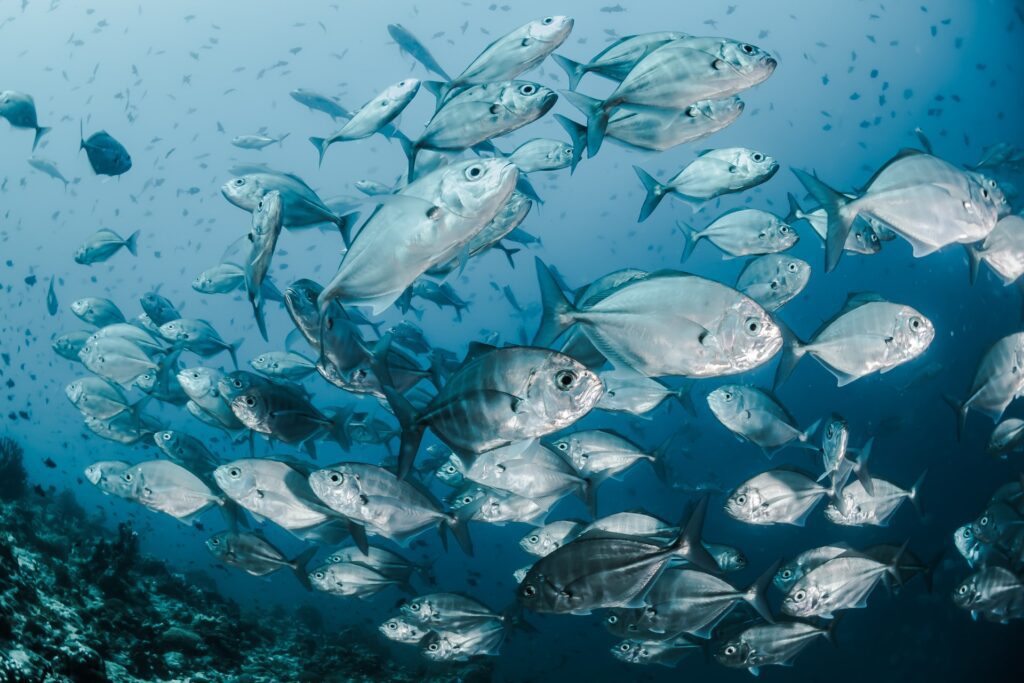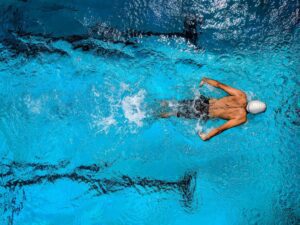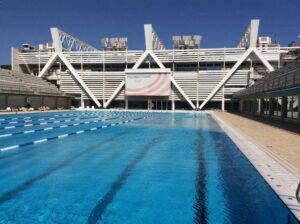07/03/2023 | Aquaculture | 8 MINUTE READ
The Lifeline of Sealife: The Importance of Dissolved Oxygen in Aquaculture

The only way that fish and shellfish can survive in the water is by consuming dissolved oxygen, which gives them the air they need to breathe even when swimming underwater. While certain species are able to survive with very little dissolved oxygen, at least some of this substance should be in the water at all times. Oxygen gets into a body of water from several different sources. However, there are also many factors that can result in dissolved oxygen concentration being depleted.
Because of how important dissolved oxygen is to aquatic life, understanding how oxygen enters the water and why dissolved oxygen concentration decreases is necessary to maintain healthy living conditions for aquatic organisms. The following offers a comprehensive overview of how dissolved oxygen is used in aquaculture.

Understanding Dissolved Oxygen and Water Quality
Dissolved oxygen is a critical indicator of water quality and is essential for the lasting survival of fish as well as other aquatic organisms. When oxygen gets into the water, it dissolves almost immediately because of the aeration that occurs from the wind. Oxygen that enters the water from the atmosphere is quickly diffused.
It can also enter the water when aquatic plants perform the photosynthesis process. There are a few factors that can affect dissolved oxygen levels, the primary of which include salinity, bacteria, and temperature.
The Relationship Between Temperature, Salinity, and Dissolved Oxygen
It’s difficult to predict what dissolved oxygen levels will be as a result of the numerous factors that can impact these levels. If dissolved oxygen levels dip too low, aquatic organisms are unable to survive. When water is cold, it can hold more dissolved oxygen. In comparison, not as much oxygen will dissolve when the water temperatures are high.
As for salinity, the amount of salt content in water determines how much oxygen can be absorbed. Fresh water is capable of absorbing a high amount of oxygen in comparison to salt water. If there’s too much algae or bacteria in the water, dissolved oxygen levels will drop.
When algae organisms die, they are quickly consumed by the bacteria that’s present in the water. While the decaying process is ongoing, the bacteria consume a large amount of the dissolved oxygen that’s in the water, which is necessary for the decaying process to be completed. If there’s an ample amount of algae in the water, dissolved oxygen levels will be rapidly depleted, which can adversely impact all aquatic organisms. Many states have quality standards that apply to all surface water and include minimum values involving dissolved oxygen saturation.
Because of the factors mentioned above, dissolved oxygen concentration is often at its worst during the warm summer months, which is when sizable fish kills are most likely. On warm and cloudy days, algae die-offs are more likely. Plant photosynthesis is also kept to a minimum, which reduces the amount of dissolved oxygen that’s produced.
To understand how important water temperature is to dissolved oxygen levels, keep in mind that water that’s at 45 degrees Fahrenheit is capable of holding nearly 12 mg/L dissolved oxygen at saturation. In comparison, water that’s at 90 degrees Fahrenheit is only able to hold around 7.4 mg/L dissolved oxygen at saturation. When the temperatures are hot and the clouds are out, the air can become muggy, which leads to further issues with dissolved oxygen getting into the water. At the same time, the amount of oxygen consumption doesn’t change. Eventually, more oxygen is consumed than is produced. These conditions are at their worst when there isn’t much wind or wave action in the water.
Impacts of Low Dissolved Oxygen Levels
Once dissolved oxygen levels fall below certain levels, fish and other types of aquatic organisms are unable to survive. As mentioned previously, a high amount of algae growth or bacteria in the water can significantly deplete dissolved oxygen because of the persistent decay process. If fish don’t have access to oxygen, they will die off.
There are numerous signs that indicate there’s not enough dissolved oxygen in the water. For instance, if you notice that most or all fish in a body of water die at the same time, this event was almost certainly caused by the fish not having access to enough dissolved oxygen. These issues most commonly occur in the hours just before dawn. Large fish are more easily affected by low dissolved oxygen levels in comparison to small fish. You might also notice that dying fish are coming up to the surface while gasping for oxygen.
For a large fish kill to occur, the weather conditions need to be hot, overcast, and calm. If a severe thunderstorm rolls through town, a fish kill can occur almost immediately afterwards. When there’s a high concentration of aquatic plants or algae in the water, fish mortality is often at its peak.

Monitoring Dissolved Oxygen in Aquaculture
It’s possible to monitor dissolved oxygen levels if you have the right tools. In aquaculture systems, dissolved oxygen is commonly measured as part of water quality sampling. If you take field measurements, you’ll likely use a polarographic DO sensor to obtain precise in-situ measurements. This option is considered the most practical. If you keep your polarographic DO sensor properly calibrated, you won’t need to worry about receiving inaccurate measurements regardless of the depth or frequency at which these measurements are taken.
You could also opt for the Winkler Method while working in the laboratory, which is often used to verify sensor calibration and perform quality control testing. However, this option requires a high amount of titration skill as well as safe handling of hazardous chemicals. You’ll also need to accurately perform the sample collection technique to avoid receiving poor results from your tests.
Ensuring Accurate Dissolved Oxygen Measurements
To receive accurate DO measurements, any sensors or equipment you use must be maintained and calibrated regularly. Over time, sensors become less accurate after being exposed to water and other solutions, which is why calibration is necessary. Make sure that you follow the right analytical methodology as well if you want to avoid obtaining incorrect readings. Keep in mind that dissolved oxygen concentration is displayed as parts per million (PPM) or milligrams per liter (mg/L). The saturation of dissolved oxygen is always shown as a percentage.
You can maintain water quality and prevent oxygen depletion by routinely monitoring dissolved oxygen levels in a body of water. When you use a high-quality sensor to perform the necessary readings, you should be able to avoid fish kills and other issues that occur when dissolved oxygen levels are too low. Although they’re much less efficient and can be inaccurate, it’s possible to use chemical test kits as well.
The method you use to monitor DO levels mainly depends on how large your operation is. For instance, commercial catfish harms usually hire separate oxygen crews to monitor DO levels at night. These crews will switch off at two-hour intervals. If you opt for this technique, you shouldn’t experience a fish kill because of low DO levels. If oxygen levels dip below a concentration of around two to four mg/L, respond by turning aeration systems on to produce more dissolved oxygen. Monitoring dissolved oxygen levels at night is necessary because of how poor conditions can be when the sun goes down.
Beyond 100% Air Saturation Readings
When you test dissolved oxygen levels, there’s a chance that the reading you receive will show you an air saturation of more than 100%, which is possible under certain circumstances. For instance, photosynthetically active organisms can produce pure oxygen. The same is true if a poor equilibration of air and water exists in the area.

Conclusion:
Dissolved oxygen plays a vital role in aquaculture and is a key indicator of water quality. In order for fish and other types of aquatic organisms to survive, proper levels of dissolved oxygen must be maintained. Dissolved oxygen levels can be impacted by such factors as algae growth, bacteria concentration, temperature, and salinity. If dissolved oxygen levels are low, these conditions might lead to fish kills and harm to other forms of aquatic organisms.
In order to perform effective water quality management, it’s essential that you monitor dissolved oxygen concentrations in aquaculture systems. Precise measurement of DO levels is only possible if the sensors you use have been correctly calibrated and maintained. You must always adhere to analytical methodology as well.
When you’re gathering measurements, it’s important to understand the various limitations and factors that can lead to dissolved oxygen readings being higher than 100% air saturation. By prioritizing dissolved oxygen levels in aquaculture, we are able to create a healthier environment for fish as well as other aquatic life, leading to more sustainable and successful aquaculture practices.
Posted by Dominic O'Donnell on July 3, 2023
Sensorex is a global leader in the design and manufacture of quality sensors for water quality and process applications. The company offers more than 2000 sensor packages for pH, ORP, conductivity, dissolved oxygen, free chlorine, chlorine dioxide, UV transmittance and other specialty measurements, as well as a full line of sensor accessories and transmitters. Its expert technical support engineers solve analytical sensor challenges with custom designs and off the shelf products.




